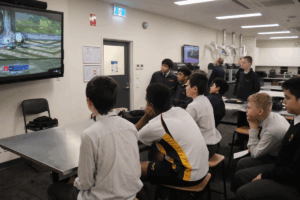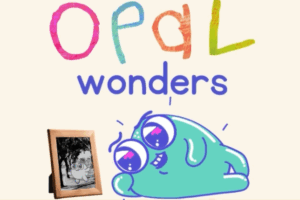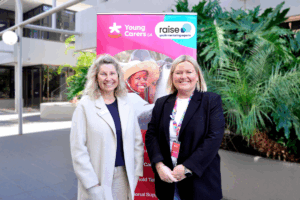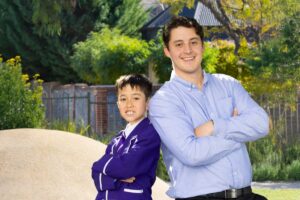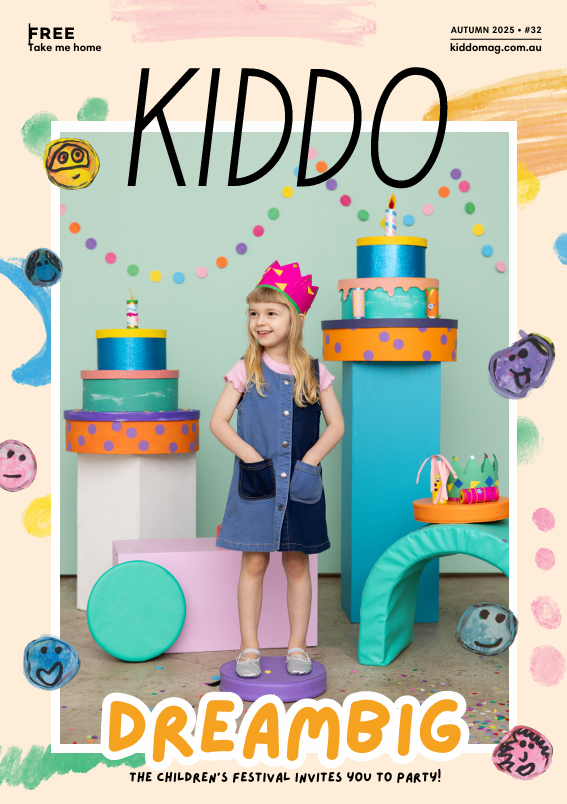by Dr Lyndsey Collins-Praino, Senior Lecturer, Adelaide Medical School, University of AdelaideEducate
Reflections from a Neuroscience Mumma
As my son enters toddlerhood, talking seems to be all I talk about these days. Watching him discover how to describe the world around him, and his excitement at being able to interact and be understood in entirely new ways, has been amazing. But for me, like for many other parents, it has also been a source of some anxiety. Is everything on track? Is he saying as many words as he should?
Is the fact that my Italian partner and I are raising him bilingual going to slow down his language acquisition?
My fears were sent into overdrive a few months ago, when we brought him to see an ENT for an unrelated problem. Much to my surprise, she barely spoke about the issue we were there for, instead suggesting that we consider inserting grommets.
Now I know that such a procedure is routine and very safe, but, like any parent, I felt my heart immediately contract at the idea of putting my little bubba through surgery. I was also a bit taken aback, as my son had no history of ear infections or other risk factors that usually lead to such a recommendation. When I asked her why she was suggesting this, she vaguely mentioned that his speech might be a bit delayed and began to use a model to describe the structure of the ear. Smiling inside, since, as a lecturer of anatomy, I use that model nearly every day to teach the same to future ENTs (sometimes you need to know your audience), I tuned out her lesson and began to wonder, was it true? Was my son’s speech delayed?
Everything seemed on track. He was readily able to understand many of the things we said to him (now, as we get closer to the “terrible twos,” whether he listens or not is an entirely different matter; today’s request that he brush his teeth led to a meltdown that 2007 Britney Spears would be proud of). He was also able to say multiple words, pulling from both English and Italian. But how did I know if I was right? Was this ENT predatory or were her fears founded?
Part of what makes it so difficult to tell is that there is a large variability between children in terms of language development. At its heart, language is built up of “building blocks” of meaningless sounds called phonemes. We learn how to combine these phonemes into words and, eventually, sentences, according to rules of grammar (rules for using language) and syntax (how to order language components in a meaningful way). Yet the exact time frame at which this occurs can vary between individuals, due to a complex combination of biological and environmental factors that we are just beginning to understand.
There is also a large discrepancy between expression and comprehension, with the capacity of children to understand language far surpassing their ability to produce it. While the average child produces fewer than 10 words by 12 months, they understand close to 40. Between 18 and 30 months, rapid language development occurs for most children, significantly increasing not only their vocabulary size, but also the way they combine words to make sentences and use language to communicate.
By the age of 3, children will have close to 1000 words and, amazingly, by the age of 6, children have acquired nearly 3,000 words and can understand approximately 20,000! Children also increase the number of words they use per sentence, increasing from around 3 words at age 2 to 5 words by age 8.
But how do these language changes mirror what is happening in the brain? Neuroscientists know a great deal about language areas of the brain. What we are still learning about, however, is how these brain regions develop and mature. Even as newborns, babies show a preference for sounds in the range of language frequencies, indicating a predisposition to learn language. However, it isn’t until later childhood or even early adulthood that the language areas of the brain show the same organisation seen in adulthood.
Experience likely plays a key role in the maturation of language areas of the brain. We know that exposure to language from birth is critical for the development of ability to understand and produce language. When you kiss those adorable little toes and “baby talk” to your bubba, you are emphasising important distinctions between sounds. Interestingly, while very young infants can perceive and discriminate between phonemes in all languages, by 6 months of age, infants begin to show preference for the phonemes of their native language. By 12 months of age, they no longer respond to foreign phonemes. This suggests that there is a critical period during which exposure to language must occur for us to acquire it normally.
So what can we do to maximise language development? Quite simply- keep talking! Even before your little one can answer back, actively engage in conversation, leaving pauses where they will someday answer, to model the rhythm of speech. Spend lots of time snuggling up and sharing books together, pointing to the photos as you read the words. Go for long walks and describe what you see. As your child becomes older, encourage them to describe to you what they are seeing or feeling. Provide as many language-rich experiences as possible- and try to avoid the temptation of allowing a screen to sub in for you, as the reciprocity that comes from you engaging in conversation together is key for language development. Keep chatting and you’re sure to give ‘em something to talk about!
Tips for Parents:
1. Keep talking!: Even before your baby can answer back, have a conversation and leave brief pauses where they will someday answer back. This helps to teach them the rhythm of language.
2. Narrate the day: Go for a walk and describe what you see around you. When making dinner or giving your bubba a bath, describe what you are doing. As they get older, encourage your little one to describe to you what is going on around (and within) them.
3. Go on an adventure: Check out the zoo, beach, park, etc. Doing so is not only fun, it also opens up new language-rich experiences for your child and gives them new objects to discover the names of.
